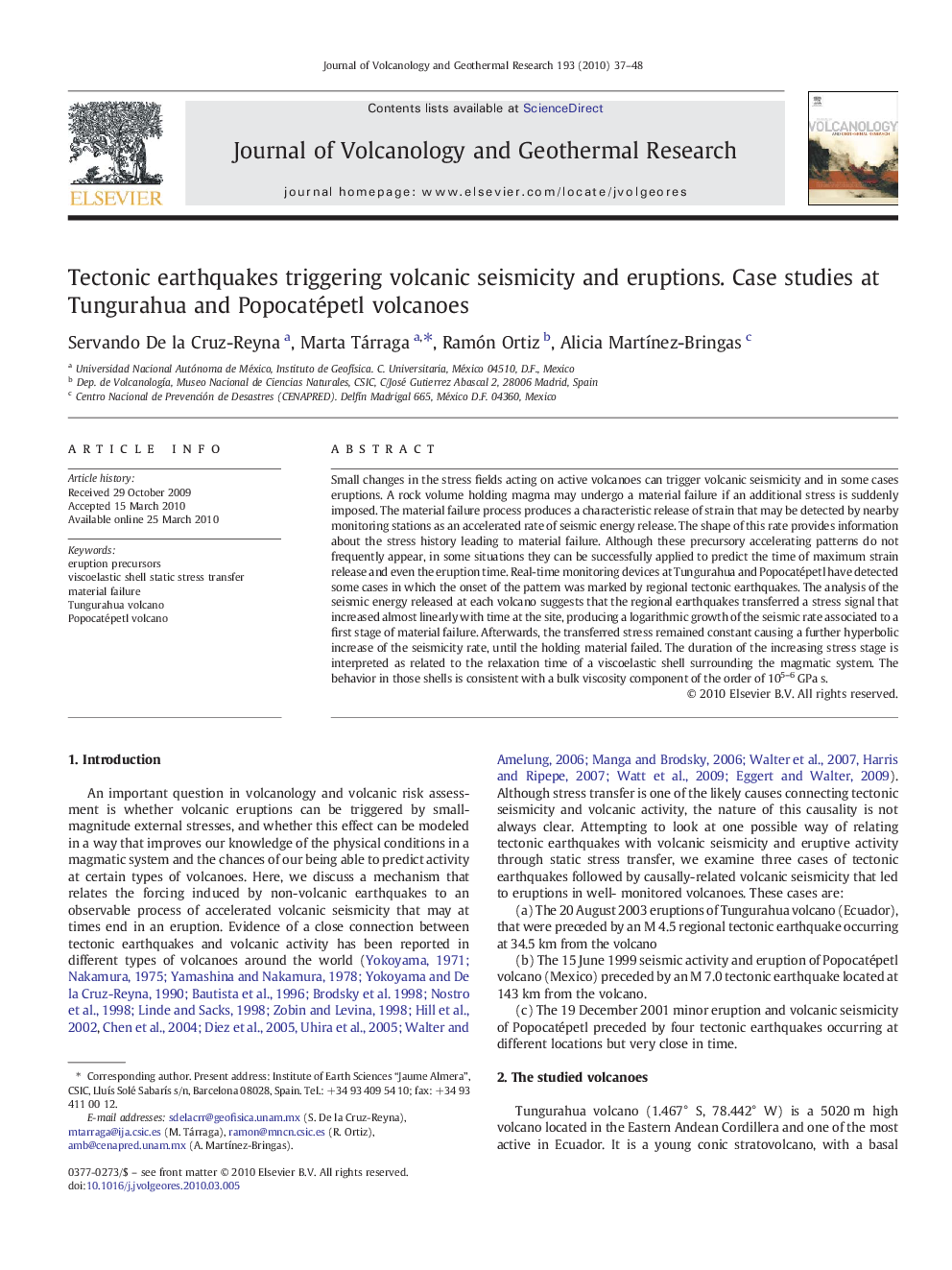| Article ID | Journal | Published Year | Pages | File Type |
|---|---|---|---|---|
| 4713018 | Journal of Volcanology and Geothermal Research | 2010 | 12 Pages |
Small changes in the stress fields acting on active volcanoes can trigger volcanic seismicity and in some cases eruptions. A rock volume holding magma may undergo a material failure if an additional stress is suddenly imposed. The material failure process produces a characteristic release of strain that may be detected by nearby monitoring stations as an accelerated rate of seismic energy release. The shape of this rate provides information about the stress history leading to material failure. Although these precursory accelerating patterns do not frequently appear, in some situations they can be successfully applied to predict the time of maximum strain release and even the eruption time. Real-time monitoring devices at Tungurahua and Popocatépetl have detected some cases in which the onset of the pattern was marked by regional tectonic earthquakes. The analysis of the seismic energy released at each volcano suggests that the regional earthquakes transferred a stress signal that increased almost linearly with time at the site, producing a logarithmic growth of the seismic rate associated to a first stage of material failure. Afterwards, the transferred stress remained constant causing a further hyperbolic increase of the seismicity rate, until the holding material failed. The duration of the increasing stress stage is interpreted as related to the relaxation time of a viscoelastic shell surrounding the magmatic system. The behavior in those shells is consistent with a bulk viscosity component of the order of 105–6 GPa s.
